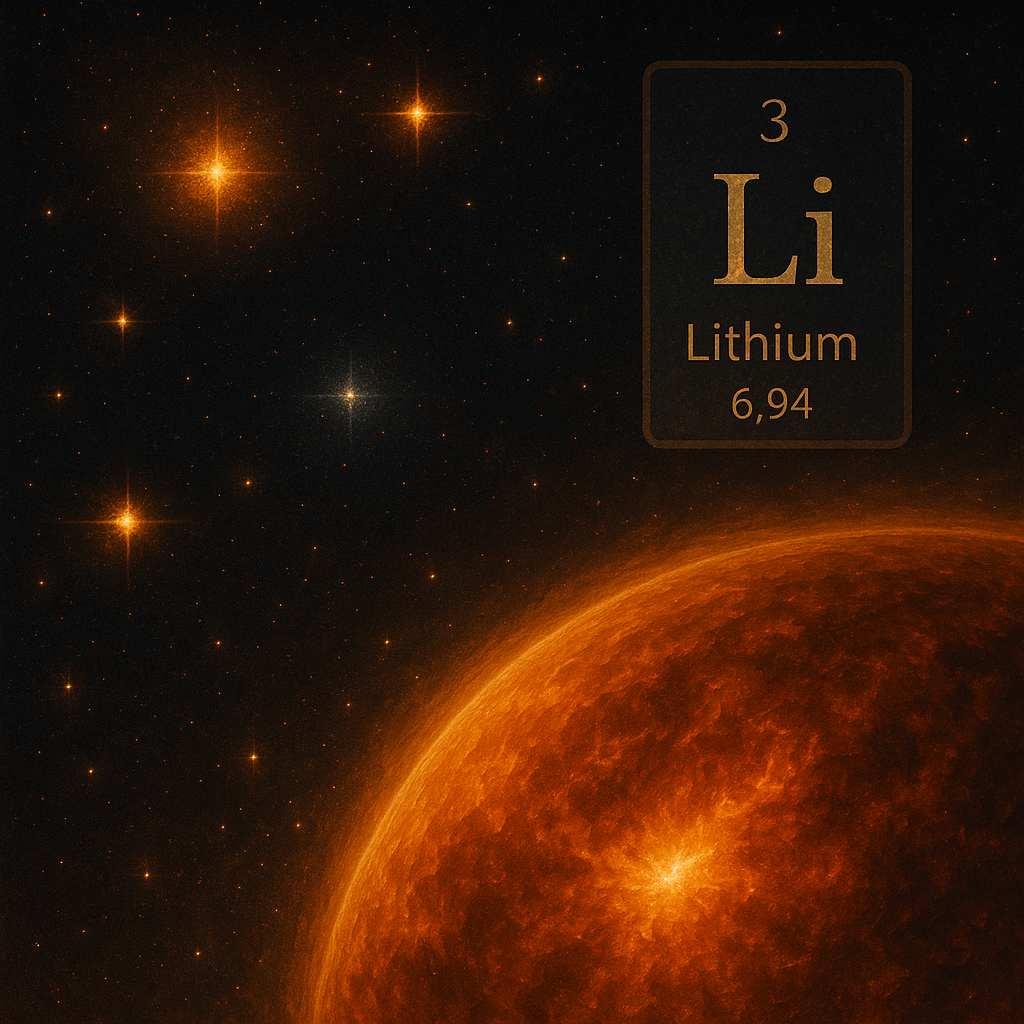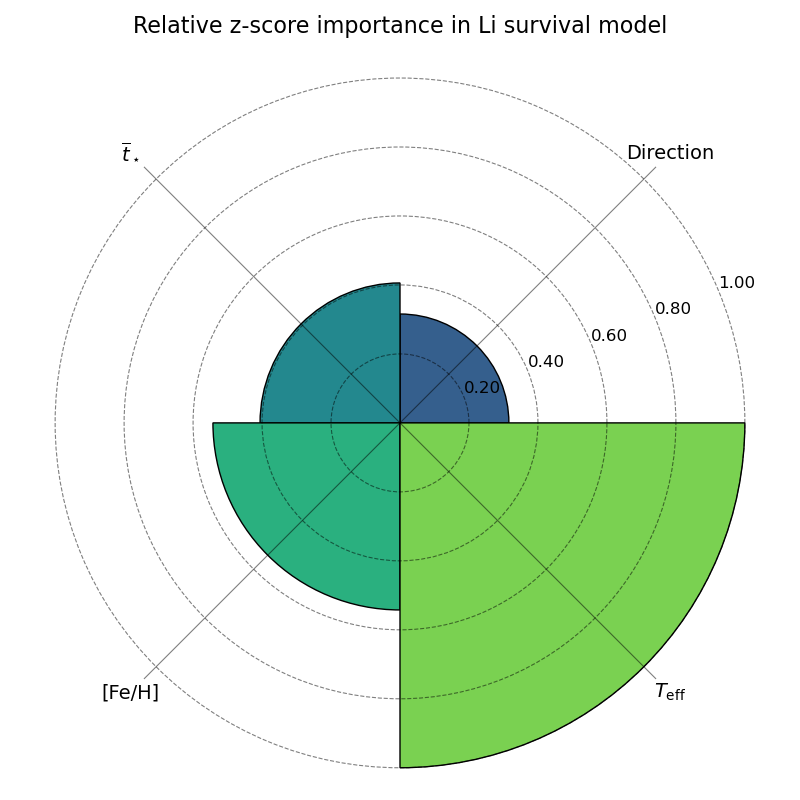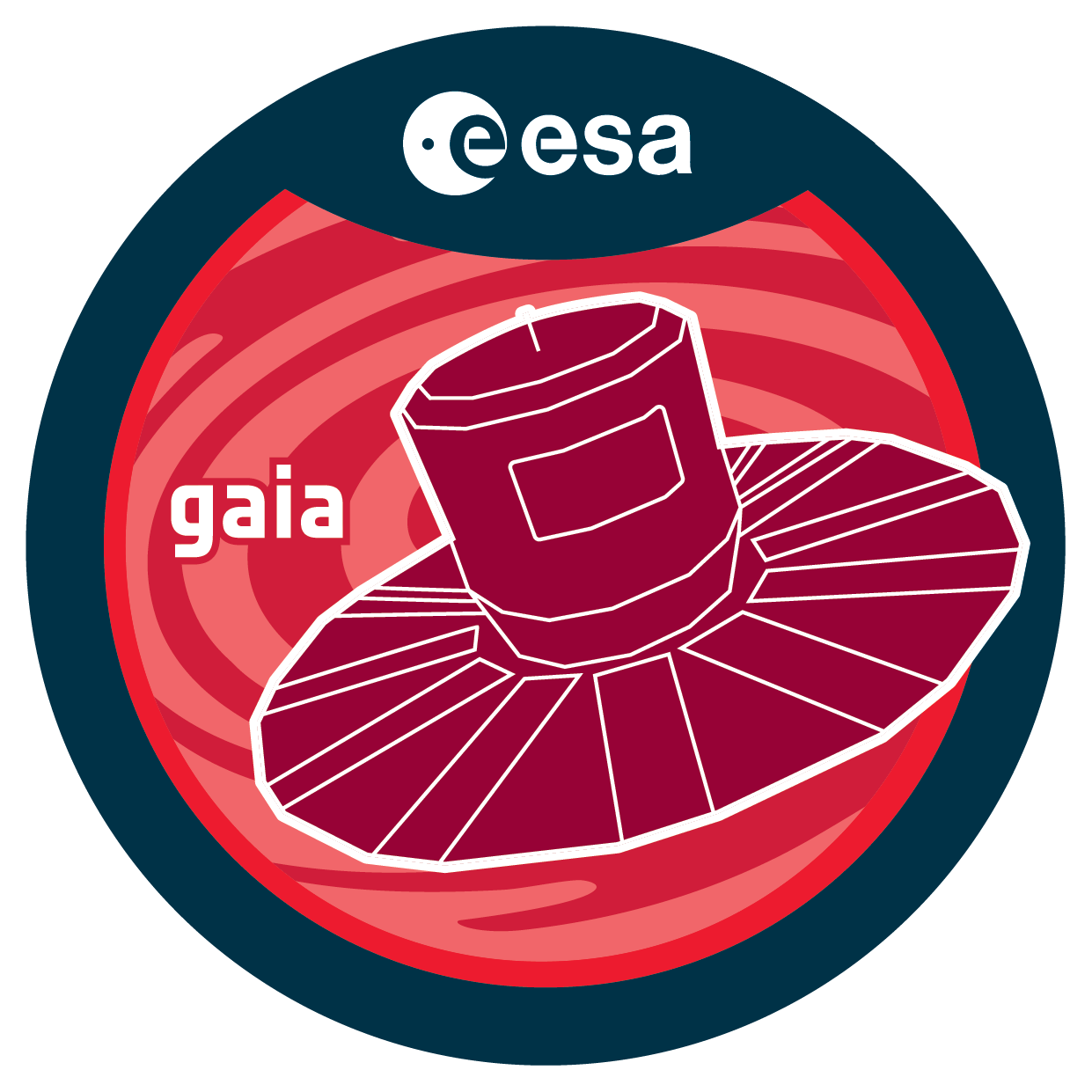How Sun-like stars wipe out lithium (and why it matters)
We investigated lithium (Li) depletion in stars in the thin disc of the Milky Wa to grasp whether the motion of stars across the Galaxy, known as radial migration, plays a role in how much Li they retain.
Before delving into the results, it’s worth explaining why Li is such a persistent issue in astrophysics.

Figure 1: A stylised visual of a star in the Galactic disc, with surrounding stars, and a symbolic reference to lithium (Li, atomic number 3). The image evokes the complex role of lithium in stellar evolution. This image was created using AI (Credit: MLL Dantas).
Lithium is one of the few elements created during the Big Bang (along with hydrogen and helium - all other elements were formed in stars or their evolution process), but Li's abundance in stars doesn’t always match theoretical expectations. There are several reasons for this:
- Mismatch with Big Bang predictions: Standard cosmology predicts a higher Li abundance than we see in old, metal-poor stars. This discrepancy is known as the "cosmological lithium problem."
- Destruction in stellar interiors: Lithium is destroyed at relatively low temperatures (around 2.5 million K), so even modest mixing inside a star can reduce its surface Li over time. This makes Li a sensitive tracer of stellar structure and evolution.
- Scatter in observed Li abundances: Even stars with similar masses and ages can show very different lithium levels. Factors like rotation, binarity, metallicity, and even the presence of planets complicate the picture.
- It forms through rare and diverse processes: Unlike heavier elements formed mostly in supernovae or neutron star mergers, lithium is produced through a mix of less common and more scattered processes, as follows.
- Cosmic ray spallation, where high-energy particles break heavier nuclei apart in the interstellar medium;
- Novae explosions, thermonuclear runaways on the surface of white dwarfs in binary systems;
- Low-mass red giants can produce and release lithium via internal mixing events like the Cameron–Fowler mechanism. These sources are not dominant in the production of most elements, and their varied contributions make the Galactic evolution of lithium especially difficult to trace.
Our study
We analysed a sample of FGK-type stars (Sun-like stars, slightly hotter or cooler than the Sun itself) from the Gaia-ESO Survey. These stars were previously grouped by metallicity and assigned birth radii based on a Galactic chemical evolution model (work developed in Dantas et al. 2025a, which we described in another post). From this, we classified stars as having migrated outward, inward, or as being keeping their orbital radii.
We then used a survival analysis approach — particularly useful for dealing with censored data, such as upper limits on lithium — to determine which parameters best explain the observed lithium abundances.
What Did We Find?
We found that migration matters, but not in the way you might think!
- Outward migrators are typically older, cooler, and more metal-rich. These are the conditions under which Li depletion is most efficient.
- Inward migrators tend to be younger and hotter, with higher surface lithium.
- Undisturbed stars fall between these two groups.
At first glance, this might suggest that outward migration leads to lithium depletion. But our survival model clearly shows that the key factors are effective temperature, metallicity, and age, not motion itself.
In other words, radial migration is correlated with lithium depletion, but it's not the cause. Stars that migrate outward tend to be old, cool, and metal-rich, and these properties naturally lead to more Li destruction. The same is true for the Sun, which likely migrated outward and also shows strong Li depletion.
Main conclusion
Our results show that lithium depletion in stars is mainly driven by the following physical parameters (in order of importance - see Fig. 2 below):
- Temperature determines whether Li can survive at the surface.
- Metallicity, which affects the depth of the convective envelope inside the star through increased opacity (physical parameters astrophysicists care about!).
- Age, which controls how long internal mixing can operate.
Radial migration does not directly deplete Li. It only appears in the picture because it tends to occur in stars that already have the properties that cause Li loss. In our paper, we show that, although the p-values and z-scores are considerable, the direction of motion has a near-constant influence on the predicted abundance of Li from our model.

Figure 2: Nightingale plot showing the relative importance of each parameter used in our survival analysis of lithium depletion. Values are scaled with respect to the most statistically significant parameter, effective temperature, which dominates the model. Direction of motion has the lowest relative contribution. This plot was created specifically for this blog post to illustrate the internal ranking of survival predictors. Credit: M.L.L. Dantas.
This distinction between correlation and causation is critical for interpreting lithium in both field stars and large surveys. Our work adds to a growing understanding that Li is shaped mostly by internal stellar physics, with kinematics playing a secondary role (if at all!). However, it is worth mentioning that we do not analyse the effects of planets in our sample.
This study also reminds us why lithium is such a fascinating element in astrophysics: it's fragile, yet revealing. Its abundance (or lack thereof) in stars today holds clues to stellar evolution, Galactic dynamics, and even cosmology. We hope this work brings us one step closer to connecting the dots between the internal lives of stars and their journeys across the Milky Way!
Why Does This Matter?
Understanding how stars lose Li over time might seem like a niche question, but it connects to some of the biggest puzzles in astronomy — from the early Universe to the chemical evolution of our Galaxy.
Li is one of the very few elements that were primarily formed in the Big Bang. That makes it a rare kind of cosmic fingerprint: its abundance in stars helps scientists test our models of how the Universe began and evolved. If the Li we see today doesn’t match what those models predict — and often, it doesn’t — it suggests something is missing in our picture of the early Universe or how stars process elements over time.
Our study helps clarify why Li goes missing. By modelling how Li depletion depends on temperature, metallicity, age, and stellar motion, we can begin to separate what's happening inside stars from how they move through the Galaxy. We show that Li is mainly destroyed by physical processes inside stars themselves — not by their orbital history — which sharpens how we interpret Li measurements in different stellar populations.
This is important not just for astrophysicists but for anyone curious about how the Universe works. Li also connects to our daily lives: it powers the batteries in our phones and laptops, and it’s even used in some medications. Yet the vast majority of Li in the Universe was forged in the first few minutes after the Big Bang, long before stars, planets, or life itself existed.
In that sense, Li becomes more than just a chemical element. It's a thread that connects the beginning of the Universe to the stars we study today — and even to the materials we use in our daily lives. By understanding how Li behaves in stars, we’re not only solving an astrophysical puzzle — we’re also learning how to read the long and complex story of matter itself, from the Big Bang to the present day.
Text by Maria Luiza. L. Dantas (Reproduced with permission).


